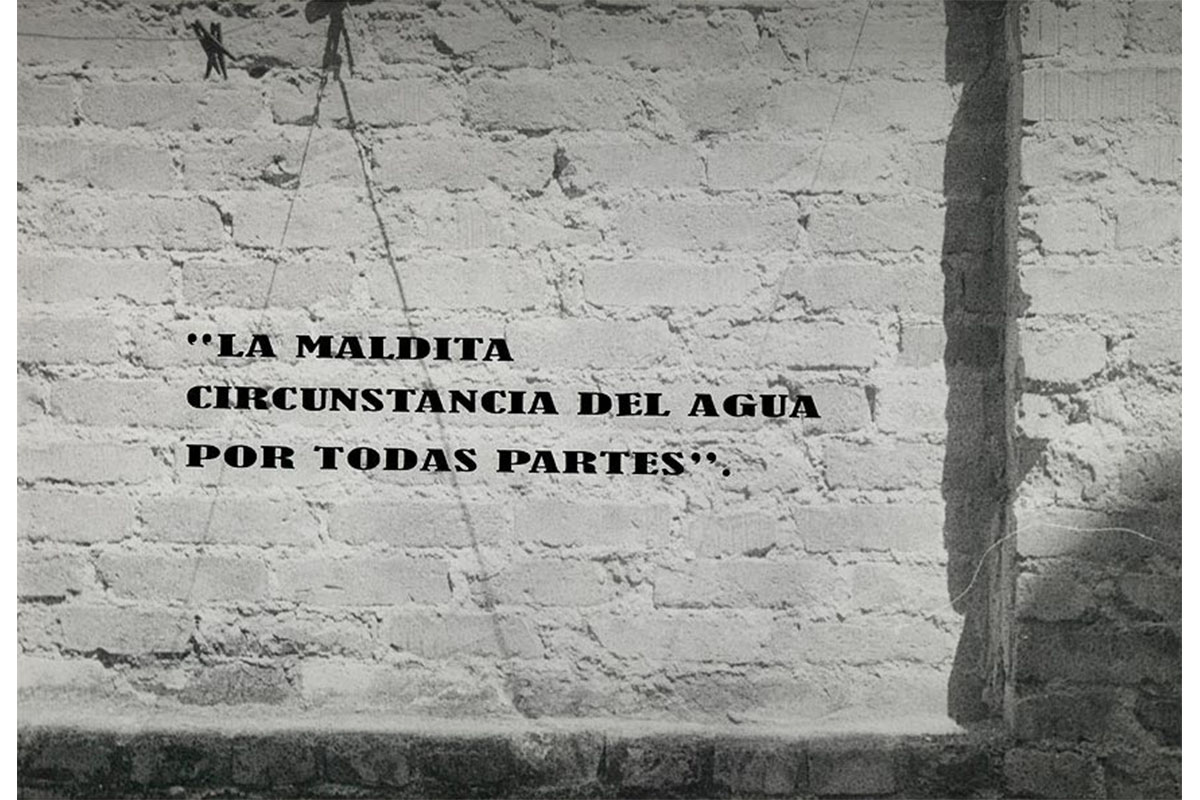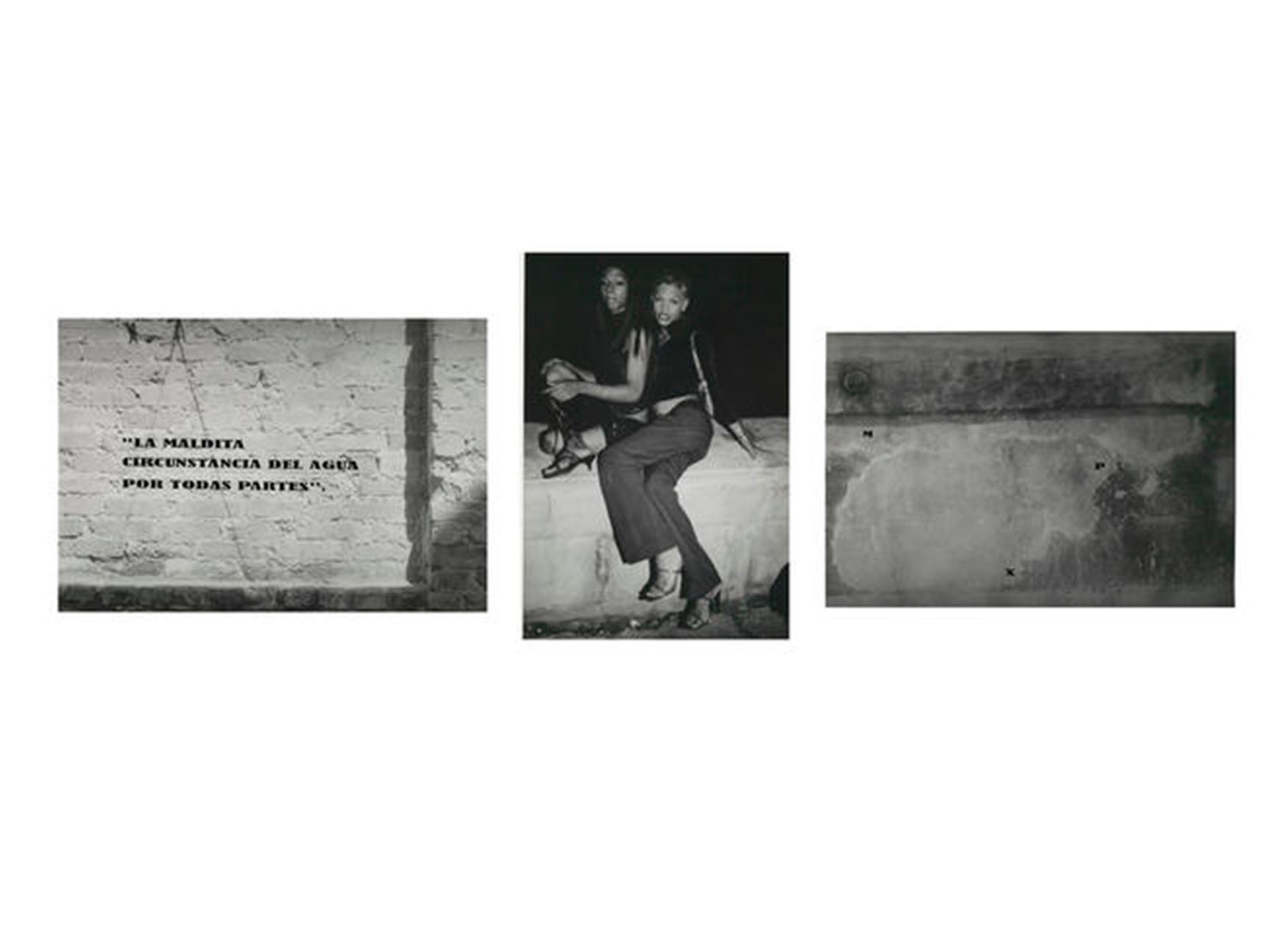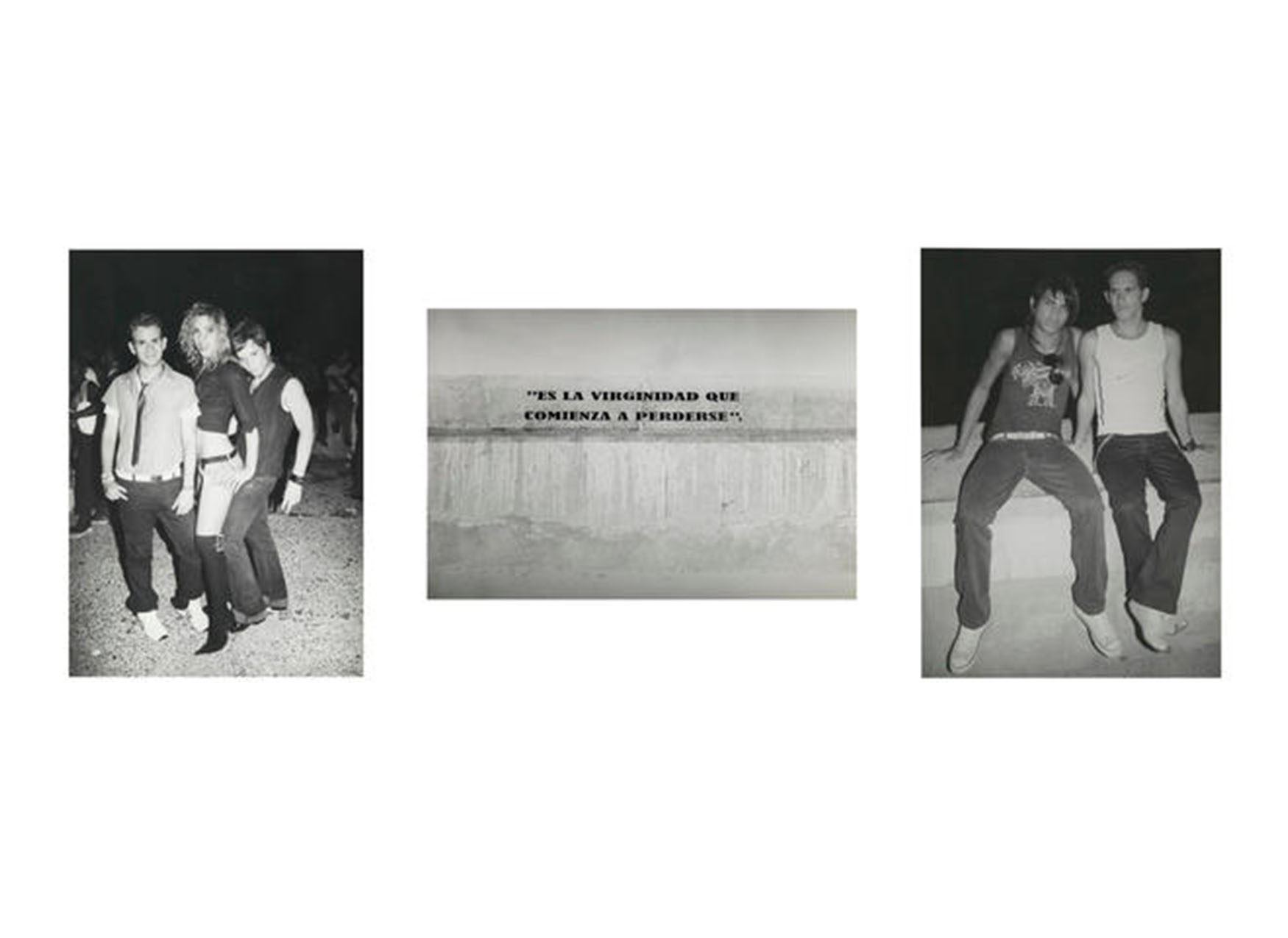
El Muro (The Wall)
Aprile Gallant is the Senior Curator of Prints, Drawings, and Photographs at SCMA.
I first saw Eduardo Hernández Santos’s El Muro photographs in 2008 during a studio visit with photographer and Hampshire College faculty member Jackie Hayden. Jackie and her husband, printmaker Steve Daiber, had been visiting and working in Cuba since 2001 as part of Hampshire College’s study abroad program, and they had been assisting Cuban artists by introducing their work to U.S. audiences since 2004. At the time, Steve and Jackie were working on publishing a book on El Muro through Steve’s imprint, Red Trillium Press. The pictures completely knocked me out.

Eduardo Hernández Santos. Cuban, born 1966. Triptych from El Muro (The Wall), 2005 (printed 2008). Gelatin silver prints with applied presstype. Purchased with funds from the Dorius-Spofford Fund for the Study of Civil Liberties and Freedom of Expression. SC 2010.48.10a, SC 2010.48.10b, and SC 2010.48.10c.
Hernández Santos began El Muro in 2005, when he discovered that a block of the Malecón, the five-mile sea wall extending from Old to Central Havana, had been claimed as a place where gay and transgendered Cubans congregated on a nightly basis. He photographed at El Muro (the wall) over the next year, engaging in discussions with his subjects, many of whom had no other public social outlet to express this part of their identities. Although Mariela Castro Espín, daughter of current Cuban president Raul Castro and Director of Cuba’s National Center for Sex Education, is a vocal supporter of gay rights in Cuba, there is a strong sense that even minor gains (like being able to gather safely in public) may soon disappear. The late-night revelers, caught in the flash of Hernández Santos’s camera, display themselves fully, making the most of their current (albeit limited) freedom.
El Muro consists of a series of ten photographic triptychs. Most of the triptychs includes two images of the wall itself shown alongside portraits of people at the wall. On the left-hand image, the artist has spelled out fragments from “La isla en peso (The Island Burden)” a poem by the well-known gay Cuban writer Virgilio Piñera (1912–1979). Piñera’s poem charts, in scathing language, what he saw as the often repressive, violent, and insular nature of Cuban culture, and he portrayed his native land as doomed and malignant. [La maldita circunstancia del agua por todas partes (the damned circumstance of water everywhere)]. Hernández Santos’s project strives to represent, in his words “the inner essence of a people who struggle to define and defend their right to be themselves, to have a space of their own.”

Eduardo Hernández Santos. Cuban, born 1966. Triptych from El Muro (The Wall), 2005 (printed 2008). Gelatin silver prints with applied presstype. Purchased with funds from the Dorius-Spofford Fund for the Study of Civil Liberties and Freedom of Expression. SC 2010.48.7a, SC 2010.48.7b, and SC 2010.48.7c.
The prints Jackie and Steve showed me were made in 2006 with expired photo paper and chemistry in the artist’s bedroom/darkroom (black and white photography supplies are difficult to obtain in Cuba). The circumstances under which the photographs were printed are important to the meaning of the work: the economic realities of making art in Cuba often require a make-shift ingenuity to successfully realize projects that would be easier accomplished outside the country. The use of expired materials also contributes to the grainy texture of Hernández Santos’s images and the relative lack of contrast, which heightens the sense of people emerging from the darkness. The artist printed three more editions (also on expired paper, but with fresh chemistry), one of which was acquired by SCMA in 2010.
El Muro will be on view at SCMA from September 2–November 20 which will coincide with a residency by the artist at Hampshire College (dates TBA).